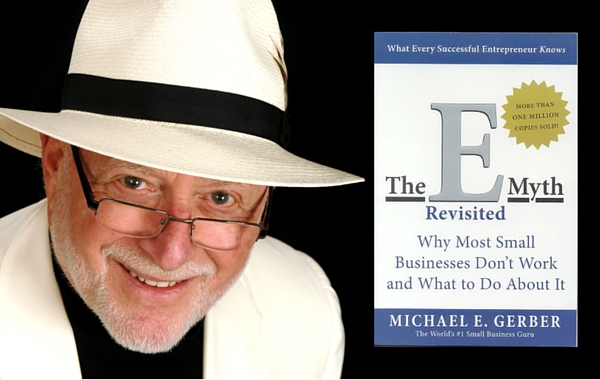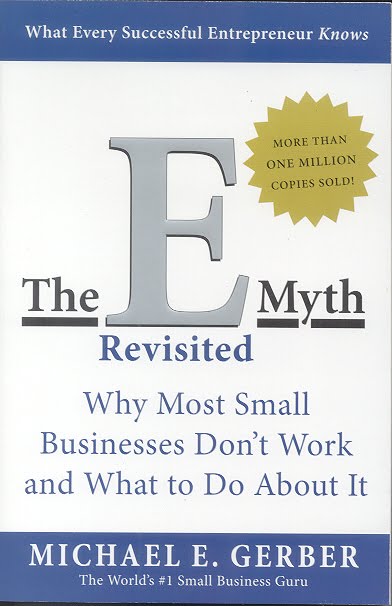Are you a struggling entrepreneur trying to juggle it all, but find it a tremendous challenge?
Well, perhaps it’s time for you to stop, take a step back, critically evaluate where your business is going, and read The E-Myth Revisited.
Few books resonate with me as much as The E-Myth Revisited does. And for good reasons too.
Written by Michael Gerber—”The World’s #1 Small Business Guru”—its key takeaways are beautifully presented in the form of a compelling fictional narrative involving the author and a small business owner named Sarah.
Through the eyes of Sarah, the owner of “All About Pies”, you’ll be whisked away by Gerber’s masterful stroke in business storytelling while learning valuable techniques needed to build a better business.
So what are some of these timeless lessons?
Business Owner = Entrepreneur + Manager + Technician/Artist
First, and perhaps most importantly, you need to realise that there are three key roles which a business owner needs to accomplish. In Gerber’s eyes, these three distinct personalities exist in each small business.
To succeed, you need to balance the needs and job scopes of all three, namely:
1) Entrepreneur: the visionary and dreamer who casts his/her eye to the future, is strongly optimistic, has a good imagination, and is a catalyst for change;
2) Manager: the pragmatic personality who looks at creating order and processes. While the entrepreneur thrives in the future, the manager lives in the past; and
3) Technician/Artist: the doer who is often the strongest of the three personalities (70% of small business owners). This is the guy or girl who loves to tinker/bake/sew/write, and is the person focused on the task at hand in the present. I have included two different job descriptions here: the technician or the artist.
To succeed, you MUST consider the needs of all three.
If you fail to dream big like an entrepreneur, your business may never reach the necessary scale needed to make it big time.
If you fail to manage your systems, processes and policies, your business operations may crumble to dust as things start to unravel.
If you fail to produce quality work of a higher standard, your customers will run away faster than a speeding road runner. Beep beep! And bye…
Building Small Businesses Like Franchises
What else should a business owner like you do?
Well, the central thesis of The E-Myth Revisited is that the most successful small businesses are built like franchise prototypes. With McDonald’s as its benchmark (like it or not, it is still the world’s most successful restaurant chain), the book urges you to “work on your business, not in it” and to build robust systems to improve your chances of success. This is elegantly captured by the following quotes:
“Most entrepreneurs are merely technicians with an entrepreneurial seizure. Most entrepreneurs fail because you are working IN your business rather than ON your business.”—Michael Gerber
When I first read this, it hit me like a tonne of bricks. Indeed, if you are a business owner, you need to build an infrastructure and a team in order to grow your enterprise. Trying to do everything yourself is a recipe for failure (or burn out).
Infused with a spirit of continuous learning, a good entrepreneur should build robust systems during the business development process. Your business systems should encompass the following three dimensions:
- Innovation
- Quantification
- Orchestration
Let’s look at these in detail.
#1 Innovation
Innovation is showcased in your constant product and service improvements, updates and upgrades.
It can be as simple as how your service staff greets a customer, how your shop designs are constantly reinvented to improve customer experience, to the processes which you automate with your software package.
#2 Quantification
Quantification is the measurement of various benchmarks. From your number of customers, time of their visits, products purchased, to company revenue.
Remember the old adage: “Whatever gets measured, gets done.”
#3 Orchestration
Orchestration is the step involving how everything fits together in a systematic fashion. Everything needs to be choreographed and curated. Nothing is left to chance.
Quoting from Theodore Levitt:
“Discretion is the enemy of order, standardisation, and quality.”—Theodore Levitt
7-Step Process to Building Strong Growing Businesses
Employing the disciplines of innovation, quantification and orchestration, you should then build your business by skillfully mixing and baking the following ingredients (love the metaphors) in the right proportions and order.
#1 Your Primary Aim
This is your personal purpose statement. In other words, “What would you like to say about your life after it’s too late to do anything about it?”
Remember that the sole purpose of your business is to fulfill your life’s goals. Not the other way around!
#2 Strategic Objective
This is a clear statement of what your business has to ultimately achieve. Usually described in terms of money (revenue), business model, customer, and other standards, it has to be related back to your life goals.
#3 Organisational Strategy
Your organisation charts, position contracts, roles and responsibilities, performance and reward recognition frameworks, and other Human Resource (HR) Development details.
#4 Management Strategy
Your systems designed to produce a marketing result, covering all aspects of the business. Usually results in the development of an Operations Manual which covers every aspect of your business operations.
#5 People Strategy
The proverbial rules of your business’s game, its logic and how it’s played in the day to day responsibilities of all your employees. This is usually captured in the Policies and Employee handbook. It will include important matters like staff training and skilling, as well as developmental frameworks.
#6 Marketing Strategy
Focus on your potential customer’s demographics (who he/she is) and psychographics (what he/she likes or thinks) as well as their buying behaviours (why he/she buys). Remember to also include other useful information like your prospect’s media consumption behaviours, and key influencers.
(Read more in my article on customer profiles.)
#7 Systems Strategy
How you can integrate all the different components of the business into a coherent and consistent whole.
This should encompasses your hard systems (furniture, fixtures, signs, equipment), soft systems (eg prospecting and selling to customers, SOPs), and information systems (what needs to be recorded either manually or automatically).
Achieving the American Dream
Towards the end of the book, Gerber turned philosophical. He waxed lyrical about bringing the dream back to American small business.
We’re also instructed to treat our business like a dojo—a martial arts school where “we make contact with ourselves—our fears, anxieties, reactions, and habits.”
While The E-Myth Revisited may have been written quite some time ago (it was last published in 1995), its teachings still ring true in this day and age.
Although social technologies may have transformed our business and consumer landscape, the basic principles of sound businesses still apply.
Highly recommended reading for start-up business owners and entrepreneurs.
“Creativity thinks up new things. Innovation does new things.”—Michael E. Gerber


